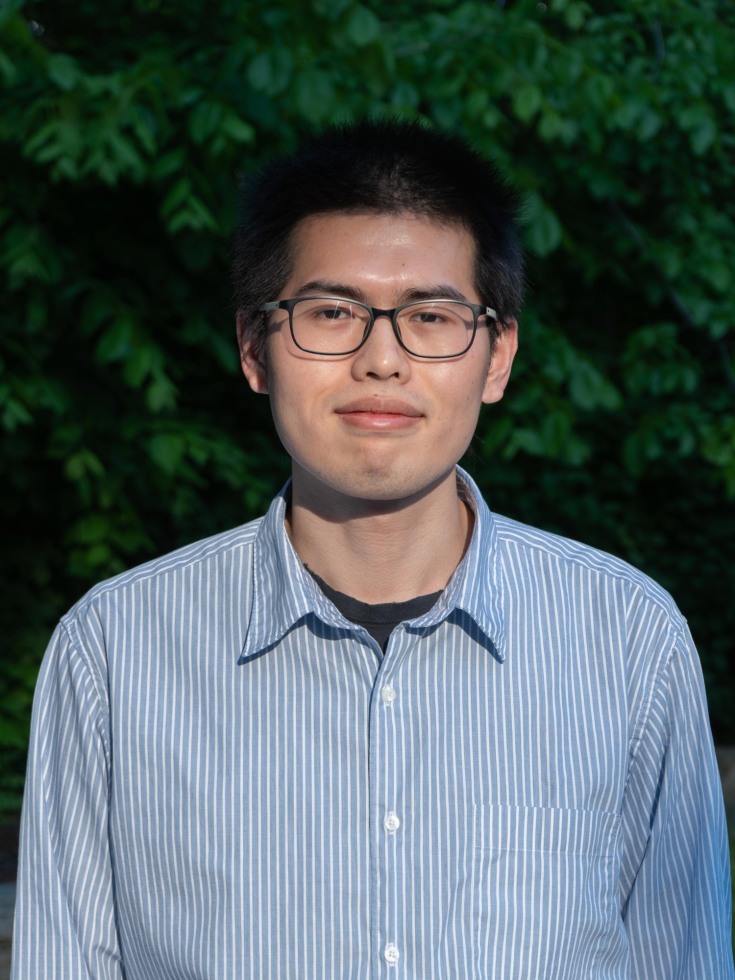Dissertation Fellowship Award Recipient Zezhu Wei Discusses Research
Zezhu Wei received the 2023 – 2024 Dissertation Fellowship Award from the Department of Physics. Zezhu discusses his research below.
There is still a long way to go before the questions can be answered, but seeing the connection between the theoretical proposals and experimental realizations is the most engaging part of the journey.

In modern condensed matter physics, the concept of topology has become more and more important in studying the exotic properties of the matter. The introduction of topology starts with Professor Michael Kosterlitz and David Thouless' discovery of topological phase transitions in 1973. Later, the phrase "topological phase of matter'' was coined to describe a phase of matter whose properties are precisely quantized in a wide range of parameters. A "topological order'', which is exhibited by a topological phase, has fractional excitations known as anyons. These anyons have different exchange statistics from the fermions or bosons and can be used to build a topological quantum computer. The best understood topological phase of matter is the fractional quantum Hall effect, first observed in experiments in 1982. Robert Laughlin gave the first theoretical explanation, and the so-called Laughlin order has anyons whose charge is 1/3 of that of an electron.
Unlike the fractional quantum Hall effect, another kind of topological matter, the spin liquid, is yet less understood in experiments. In 2006, Alexei Kitaev proposed a spin liquid model, which exhibits the Ising topological order. Since then, there have been many attempts to find any material with this feature. Some claimed that RuCl3 has a spin liquid phase, but some other experiments cast doubts on this claim. To help resolve the mystery behind the Kitaev spin liquid, Zezhu Wei and his collaborators, including his advisor Professor Dima Feldman, fellow student Navketan Batra and Professor Vesna Mitrović, tried to propose a feasible experimental probe for these exotic topological orders.
In quantum Hall physics, electronic interferometers are proven to be powerful tools for probing the fractional statistics of anyons. The problem with adapting the interferometry technique to spin liquids lies in the absence of charge excitations. Hence there is no electric current to measure. Wei and his collaborators discovered that thermal interferometers are effective probes for the fractional statistics of the Ising topological order as the thermal current is related to the energy flow in the system, which is universal.
There are two geometries of interferometers: Fabry-Pérot and Mach-Zehnder; the two would show contrasting behaviors in experiments. Fabry-Pérot interferometers can distinguish different types of anyons inside according to their corresponding thermal currents. However, in experiments, it is possible that the anyon inside is always the same, and hence the Fabry-Pérot technique fails. What Wei and his collaborators found is that, in Mach-Zehnder interferometers, the absence of the interference thermal current indicates the existence of the Ising topological order, as opposed to the trivial boson/fermion order. They later generalized this finding and showed that the absence of the interference current is a general feature for an arbitrary non-trivial topological order, not only the Ising order. This finding would help us understand topological phases better.
Topological phases of matter are an extremely rich field to investigate. Even in the best understood quantum Hall physics, many mysteries are left unsolved. Explaining recent data from quantum Hall interferometer experiments with filling factor 2/5 is the next goal for Wei and his collaborators. There is still a long way to go before the questions can be answered, but seeing the connection between the theoretical proposals and experimental realizations is the most engaging part of the journey.
Zezhu’s advisor, Professor Dmitri Feldman, discusses Zezhu’s research focus and the skills that contributed to Zezhu receiving the award.
“We all know from basic quantum mechanics that there are two types of particles in the Universe: fermions and bosons. We also know that the electric charge of any particle is quantized in units of the electron charge e (or e/3 if we include confined quarks). These two points are well established for particles at high energies, but so-called anyons that emerge at very low energies in some types of condensed matter break both rules. Their charge can be smaller than e/3 and their statistics is never Bose or Fermi. Besides their basic interest, anyons provide a path to topological quantum computing that requires no error correction.
Zezhu's research focuses on anyons and the ways to find them in nature. There has been major recent experimental progress in detecting charged anyons, but neutral anyons are much harder to probe. Zezhu's recent work on thermal interferometry combines ideas from optics and thermal physics to propose a probe for neutral anyons. In his work, Zezhu combines excellent analytical and numerical skills with a rare ability to look at the problem from an unexpected side and ask deep questions."
Congratulations, Zezhu!